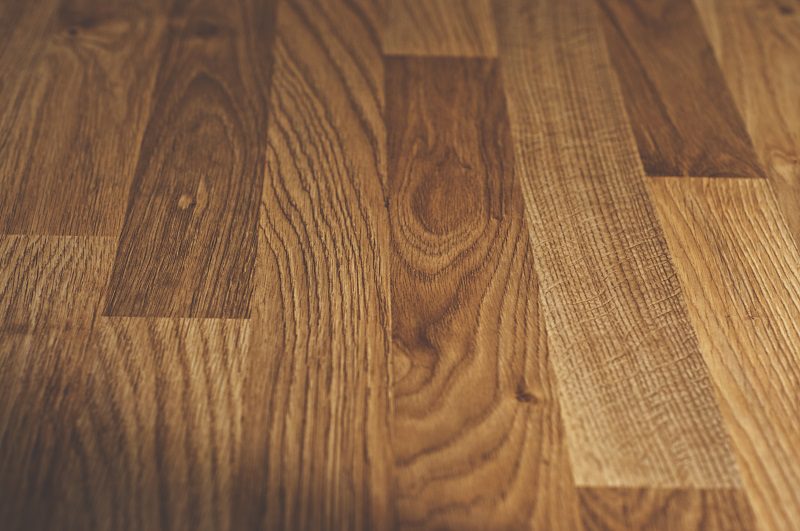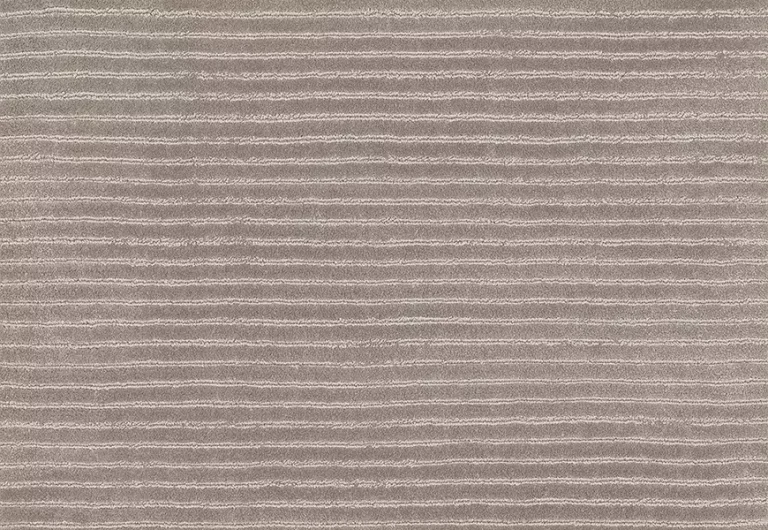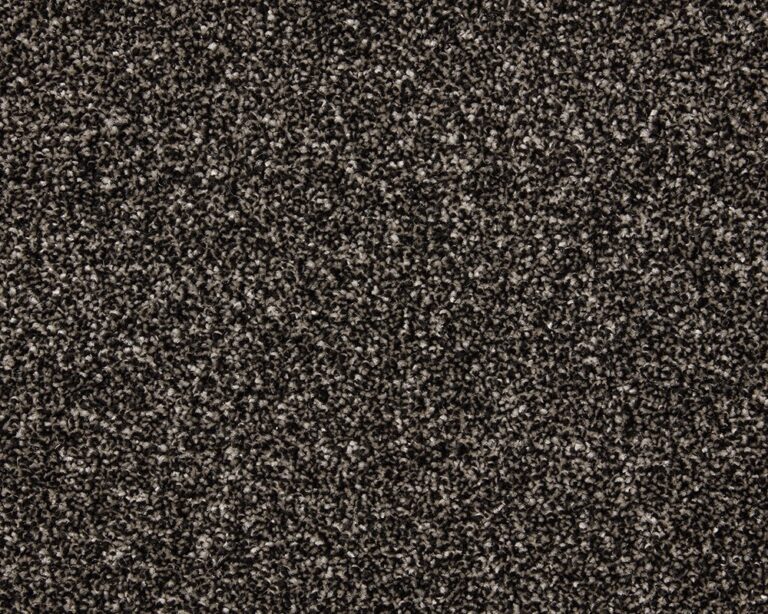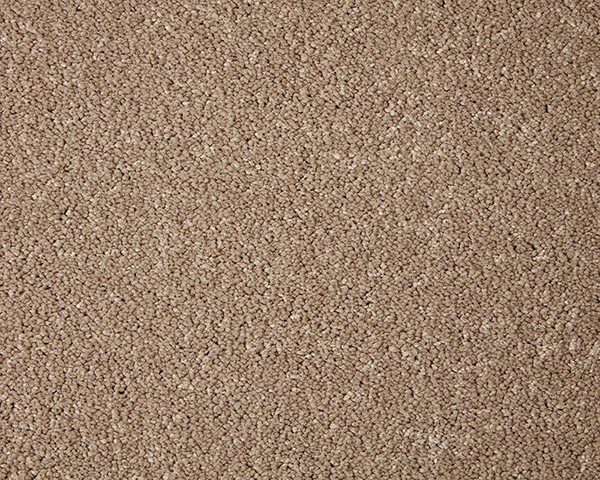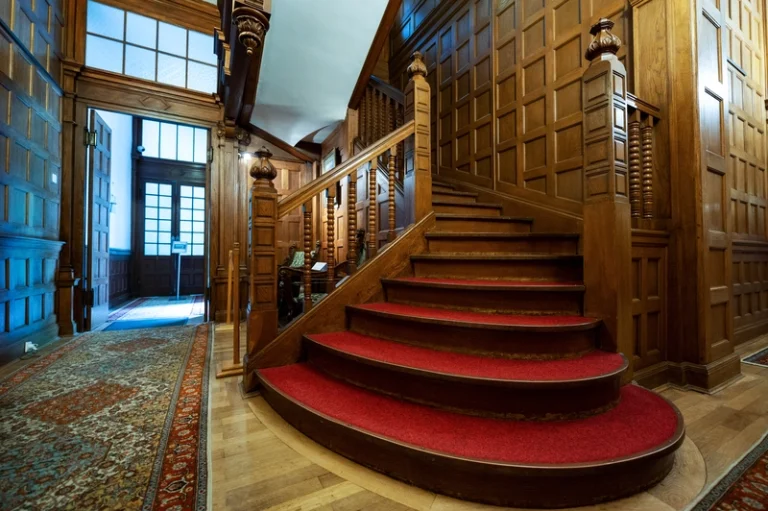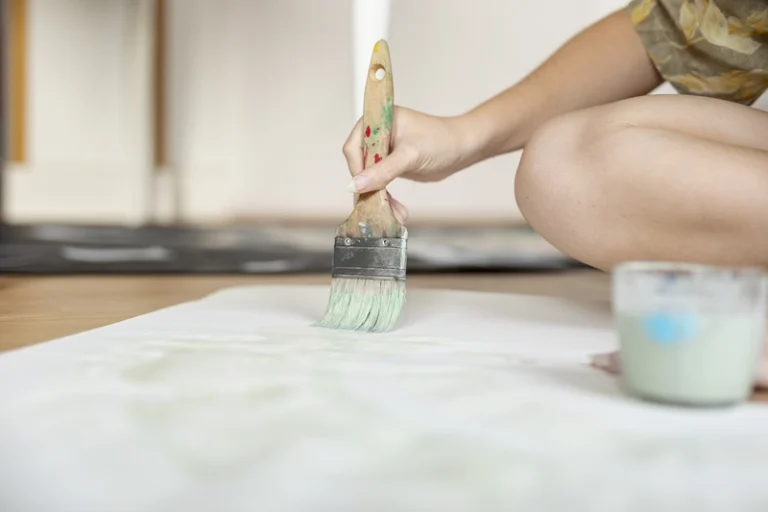Looking to upgrade your flooring? Cushioned vinyl flooring might be the perfect option for you.
In this article, we’ll explore what cushioned vinyl flooring is, the different types available, the benefits and disadvantages of choosing this material, how to install it, and the best practices for maintaining it.
Whether you’re looking for comfort, durability, or easy maintenance, cushioned vinyl flooring could be the solution you’ve been searching for. Let’s dive in!
What Is Cushioned Vinyl Flooring?
What is cushion vinyl flooring? Cushioned vinyl flooring is a type of vinyl flooring that comes with an additional layer of cushioning, providing a soft and comfortable underfoot feel. It is a popular choice for areas where comfort is key, such as bedrooms, living rooms, and playrooms.
This additional cushioning layer in cushioned vinyl provides extra support and noise reduction, making it ideal for homes with children or pets. The composition of cushioned vinyl flooring typically includes multiple layers, with a wear layer on top for durability and stain resistance.
Brands like Armstrong, Shaw, and Mohawk offer a wide range of vinyl flooring types, including cushioned options, showcasing various textures, colours, and patterns to suit different interior design preferences.
See product: Amor Cascais
Types of Cushioned Vinyl Flooring
This cushion type of vinyl flooring comes in various types to cater to different preferences and needs. Some common types include glue-down vinyl flooring, click vinyl flooring, loose-lay vinyl flooring, and peel-and-stick vinyl flooring.
Glue-down vinyl flooring requires adhesive to be spread on the subfloor before laying down the vinyl sheets, providing a strong and durable bond. It is ideal for high-traffic areas and environments prone to moisture.
Click vinyl flooring, on the other hand, features an innovative locking system that allows for easy installation without adhesives, making it a popular choice for DIY enthusiasts.
Loose-lay vinyl flooring offers a simple installation process, where the planks or tiles are laid directly onto the subfloor without any adhesive.
Peel-and-stick vinyl flooring involves removing the backing and sticking the tiles or planks onto the subfloor, making it a convenient option for quick updates.
a. Glue-Down Vinyl Flooring
Glue-down vinyl flooring is a type of cushioned vinyl flooring that requires adhesive to be applied to the subfloor before installation. Many renowned flooring brands offer glue-down installation method, such as Kahrs, Karndean, Luvanto, etc.
One of the key characteristics of glue-down vinyl flooring is its exceptional durability and stability which make it a preferred choice for residential and commercial spaces alike. This type of flooring is known for its ability to withstand heavy foot traffic and resist wear and tear over time.
In terms of installation, the process of installing glue-down vinyl flooring involves meticulously preparing the subfloor by ensuring it is clean, dry, and level before applying the adhesive. Once the adhesive is spread evenly, the vinyl planks or tiles are firmly pressed into place, creating a strong bond with the subfloor.
b. Click Vinyl Flooring
Click vinyl flooring, also known as interlocking vinyl planks, is a popular choice for DIY installations due to its easy click-and-lock mechanism. Luvanto is a reputable brand offering a range of click vinyl flooring options.
One of the standout features of Luvanto’s click vinyl flooring is its high level of durability, making it ideal for high-traffic areas in homes or commercial spaces. Waterproof and scratch-resistant, this type of flooring stands up well to the wear and tear of everyday life.
Luvanto’s click vinyl planks come in a variety of styles and designs, mimicking the look of natural hardwood, stone, or tile without the hefty price tag. This allows homeowners to achieve the aesthetic they desire without compromising on quality.
c. Loose-Lay Vinyl Flooring
Loose-lay vinyl flooring is a type of cushioned vinyl flooring that does not require adhesive for installation, relying on its weight and grip to stay in place.
Easy installation is one of the key features of loose-lay vinyl flooring, allowing for quick and hassle-free setup without the need for specialised tools or adhesives. This type of flooring is also known for its incredible flexibility, making it easy to remove and re-install in case of any desired changes.
d. Peel-and-Stick Vinyl Flooring
Peel-and-stick vinyl flooring, also known as self-adhesive vinyl, offers a simple installation process by peeling off the backing and sticking the tiles or planks to the subfloor. Leoline is a trusted brand for high-quality peel-and-stick vinyl flooring options.
One of the key advantages of peel-and-stick vinyl flooring is its versatility, as it can be easily applied on various surfaces like concrete, wood, or existing vinyl floors without the need for extensive subfloor preparation. This makes it a perfect choice for anyone looking to revamp their living space quickly and without the hassle of traditional flooring installation.
Benefits of Using Cushioned Vinyl Flooring
Is cushioned vinyl flooring good? It is! One of the key attractions of cushioned vinyl flooring is its comfortable and soft surface that provides a warm and inviting feel to any room. Unlike some harder flooring options, walking barefoot on cushioned vinyl feels pleasant and cosy.
Its durability makes it a popular choice for high-traffic areas in homes or commercial spaces where it can withstand heavy use without showing signs of wear.
Its resistance to water and moisture is ideal for areas prone to spills, such as kitchens or bathrooms, as it can be easily wiped clean without causing damage. The ease of installation and maintenance also sets it apart from other types of flooring, making it a practical and cost-effective choice for many homeowners and businesses.
a. Comfortable and Soft Underfoot
One of the key benefits of cushioned vinyl flooring is its comfortable and soft underfoot feel, providing a cosy surface for walking and standing.
In terms of selecting flooring for your space, comfort is a crucial aspect to consider. Cushioned vinyl flooring offers not only durability but also an added softness that enhances the overall user experience, especially in areas where standing for long periods is common. The cushioning properties of this type of flooring reduce fatigue on joints and muscles, making it a popular choice for kitchens and bathrooms. Whether you prefer a modern or traditional look, cushioned vinyl floors come in a variety of styles and designs to suit every taste.
b. Durable and Resistant to Wear and Tear
Cushioned vinyl flooring is known for its durability and resistance to wear and tear, making it a long-lasting flooring option for high-traffic areas. TEKA Flooring is a trusted supplier of durable cushioned vinyl flooring products.
In terms of durability, cushioned vinyl flooring stands out due to its ability to resist scratches, dents, and stains, ensuring that it maintains its pristine appearance even after years of heavy use. This type of flooring is designed to withstand the rigours of daily life, making it a popular choice for homes, offices, and commercial spaces alike. Whether you have pets, children, or frequent guests, cushioned vinyl flooring offers peace of mind knowing that it can handle whatever is thrown its way. TEKA Flooring’s range of durable cushioned vinyl flooring options caters to various styles and preferences, ensuring that you can find the perfect blend of durability and aesthetics for your space.
c. Easy to Install and Maintain
The cushioned vinyl floor is easy to install and maintain, saving time and effort during the setup and cleaning process. Yorkshire offers a range of user-friendly cushioned vinyl floor options.
One of the key advantages of cushioned vinyl floors is the simple installation process, which can often be done as a DIY project, reducing the need for professional assistance. The click-lock or adhesive options make it suitable for various skill levels.
Maintaining a cushioned vinyl floor is hassle-free; regular sweeping and occasional damp mopping are usually sufficient to keep it looking its best. When cleaning, make sure to use manufacturer-recommended products to avoid damaging the floor’s protective layer. It’s advisable to place felt pads under furniture legs to prevent scratches and rotate rugs to ensure even wear.
d. Water and Moisture Resistant
The water and moisture resistance of cushioned vinyl flooring makes it an ideal choice for areas prone to spills and dampness, ensuring durability and longevity.
One of the key advantages of cushioned vinyl flooring is its ability to resist water and moisture penetration, making it perfect for bathrooms, kitchens, and other wet areas. This feature not only enhances the lifespan of the flooring but also reduces the risk of mould and mildew growth.
Disadvantages of Cushioned Vinyl Flooring
Despite its benefits, cushioned vinyl flooring has some drawbacks, such as not being as environmentally friendly as other flooring options, being prone to scratches and dents, and having limited design options.
One of the significant challenges associated with cushioned vinyl flooring is its environmental impact. The production process of vinyl flooring involves the use of chemicals and non-renewable resources, contributing to environmental degradation. Vinyl flooring is not biodegradable, leading to long-term waste disposal issues.
Another drawback is the susceptibility of cushioned vinyl flooring to damage. Despite its durability in terms of water resistance, it is susceptible to scratches and dents from heavy furniture or sharp objects. This can result in the need for frequent repairs or replacements, adding to the overall cost of maintenance.
a. Not as Environmentally Friendly as Other Flooring Options
One disadvantage of cushioned vinyl flooring is that it is not as environmentally friendly as other flooring options like wood, as vinyl is a synthetic material that may not be sustainable in the long term.
The production of cushioned vinyl flooring often involves the use of harmful chemicals and additives that can have negative impacts on both human health and the environment. These substances can off-gas, releasing volatile organic compounds (VOCs) into the air, contributing to indoor air pollution and potential health hazards.
The disposal of vinyl flooring can pose serious environmental challenges. When vinyl flooring reaches the end of its lifespan, it is often sent to landfills where it can take hundreds of years to decompose, releasing toxic substances into the soil and groundwater.
b. Can Be Prone to Scratches and Dents
Another disadvantage of cushioned vinyl flooring is that it can be prone to scratches and dents, especially in areas with heavy furniture or sharp objects. Laminate flooring is known for its scratch-resistant properties compared to cushioned vinyl.
In terms of protecting your cushioned vinyl flooring from these unwanted marks, simple preventative measures can go a long way.
- Placing felt pads under furniture legs can help distribute weight and reduce the risk of scratches.
- Using rugs or floor mats in high-traffic areas can provide an extra layer of protection.
- Regularly sweeping or vacuuming your floors to remove dirt and debris can also prevent scratches caused by friction.
In terms of maintenance, applying a protective sealant can help enhance the durability of cushioned vinyl flooring and make it more resistant to dents. By taking these steps, you can prolong the life of your flooring and keep it looking its best.
c. Limited Design Options
Cushioned vinyl flooring may have limited design options compared to other flooring types, restricting customisation and personalisation choices for interior décor.
While the selection may be narrower in cushioned vinyl flooring, there are strategies to enhance its aesthetic appeal and style. Utilising creative patterns or opting for embossed textures can add depth and visual interest to the space, making it stand out. Incorporating coloured accents or experimenting with different installation layouts can elevate the overall look of the room.
d. How to Install Cushioned Vinyl Flooring
Installing cushioned vinyl flooring involves several steps to ensure a proper and durable finish. From preparing the subfloor to securing the edges and seams, each stage requires attention to detail and precision.
a. Prepare the Subfloor
Preparing the subfloor is a crucial first step in installing cushioned vinyl flooring, ensuring a smooth and stable base for the new flooring. Polyfloor provides subfloor preparation products suitable for cushioned vinyl installations.
One of the key aspects of subfloor preparation for cushioned vinyl flooring is achieving a level surface. Without proper levelling, the vinyl flooring may not lie flat, causing issues with the final installation. Moisture can be a common concern, so using a moisture barrier is essential to protect the flooring from damage. The subfloor requirements for cushioned vinyl flooring are specific, often needing to be clean, dry, and free from any debris that could affect the installation process.
b. Measure and Cut the Vinyl Flooring
Precise measurement and cutting of the vinyl flooring are essential to ensure a proper fit and seamless finish. Abingdon Flooring SoftStep offers high-quality cushioned vinyl flooring that is easy to measure and cut.
When embarking on a flooring project, it’s crucial to begin by accurately measuring the dimensions of the room where the vinyl flooring will be installed. Utilising a tape measure and marking the measurements clearly will help avoid errors. Subsequently, follow manufacturer guidelines on cutting techniques to ensure straight, clean edges. Abingdon Flooring SoftStep provides detailed instructions that can simplify this process.
c. Lay the Flooring in Place
Laying the cushioned vinyl flooring in place requires precision and care to ensure a uniform and professional installation.
When starting the installation process, it’s crucial to begin by preparing the subfloor properly to guarantee a smooth and long-lasting finish. Alignment plays a key role in achieving a seamless look, ensuring that each plank or tile fits snugly against its neighbour. Pattern matching is also essential, especially for designs that require a specific layout to achieve the desired aesthetic. Seam integration must be seamless, with joints properly fused together to create a cohesive appearance across the entire floor.
d. Secure the Edges and Seams
Securing the edges and seams of cushioned vinyl flooring is essential to prevent lifting or shifting over time.
When installing cushioned vinyl flooring, using the right tools is crucial. A seam roller helps to ensure that seams are properly bonded, creating a seamless appearance. Additionally, edge trim provides a finished look and prevents edges from fraying or curling. By employing these tools, installers can achieve a professional finish that not only enhances the aesthetics of the space but also increases the durability of the flooring.
Tips to Maintain Cushioned Vinyl Flooring
Proper maintenance is essential to preserve the appearance and longevity of cushioned vinyl flooring.
From regular sweeping to using mild cleaning solutions, a few simple steps can keep the flooring looking fresh and clean. To maintain the lustre and resilience of this type of flooring, it is recommended to avoid harsh abrasives and opt for gentle cleaning products that are specifically designed for vinyl. When dealing with stains, address them promptly with a mixture of warm water and a gentle detergent, gently scrubbing the affected area with a soft cloth to avoid damaging the surface. Placing protective pads under furniture legs and using doormats at entrances can help prevent scratches and minimise dirt accumulation.
a. Regularly Sweep or Vacuum the Floor
Regular sweeping or hoovering is crucial to remove dust, dirt, and debris from cushioned vinyl flooring, maintaining its appearance and prolonging its lifespan. Rhinofloor offers cleaning tools suitable for cushioned vinyl floors.
It is important to remember that a clean floor not only enhances the aesthetics of the room but also contributes to a healthier living environment. Particles trapped in the flooring can harbour allergens and bacteria, leading to potential health issues if not regularly cleaned.
When choosing cleaning tools for cushioned vinyl floors, consider using a microfiber mop or a soft-bristle brush to help gently lift away dirt without causing damage to the flooring.
b. Clean Spills and Stains Immediately
Promptly cleaning spills and stains on cushioned vinyl flooring is essential to prevent damage and maintain the floor’s integrity. Lifestyle offers cleaning solutions suitable for removing spills and stains from cushioned vinyl floors.
When dealing with spills and stains on cushioned vinyl flooring, it’s crucial to act quickly to prevent them from setting in. One effective method is to gently blot the spill with a clean cloth or kitchen paper to absorb as much of the liquid as possible. Avoid scrubbing vigorously, as this could spread the stain further. Vinegar and water solution can be an effective DIY cleaner for many stains, while specially formulated vinyl floor cleaners are also available for tougher stains.
c. Use Mild Cleaning Solutions
Using mild cleaning solutions is recommended for maintaining the finish and appearance of cushioned vinyl flooring without causing damage. Avenue offers gentle cleaning products suitable for cushioned vinyl surfaces.
In terms of cleaning cushioned vinyl flooring, it’s essential to use products that are specifically formulated to protect the material while effectively removing dirt and grime. Choosing the right cleaner can make a significant difference in extending the lifespan of your flooring and keeping it looking fresh.
d. Avoid Harsh Chemicals and Abrasive Tools
Avoiding harsh chemicals and abrasive tools is vital to prevent damage to cushioned vinyl flooring surfaces.
It is crucial to understand that cushioned vinyl flooring requires gentle care to maintain its durability and appearance. Cleaning with mild detergents and warm water is recommended to remove dirt and stains without causing harm to the surface.
Using soft-bristle brushes or microfiber mops can effectively clean the flooring without scratching or causing abrasions. Avoiding harsh scrubbing motions and opting for gentle, circular movements can help prevent any potential damage.
Regular sweeping and light mopping are essential to keep the flooring free of debris and maintain its lustre. Placing protective pads under furniture legs can prevent scratches and indentations on the cushioned vinyl surface.
In essence, with adequate maintenance, cushioned vinyl flooring can demonstrate resilience and longevity. Therefore, there’s no reason to doubt choosing this type of flooring for your residence. Beyond its remarkable endurance, it also offers functionality and an appealing visual appeal to your home environment.
At TEKA Flooring, a wide array of vinyl flooring options awaits you. Whether you prefer tones in brown, natural hues, or lighter shades, TEKA Flooring has them all. Feeling unsure about which design would best complement your space? Don’t worry, just consult with us! We’re here to help you make the perfect choice.
Read Also:







